Limyra Ancient City is an important historical settlement located in the Finike district of Antalya province in southwestern Turkey. Limyra is especially famous for its ruins from the Roman and Byzantine periods and draws attention with its mythological and historical importance. Limyra, one of the important cities of the Lycian region in ancient times, is an excellent source of interest for archaeologists and historians with its rich historical past. Today’s excavations reveal the past splendour of this ancient city and offer visitors a historical journey.
Limyra Ancient City Photos
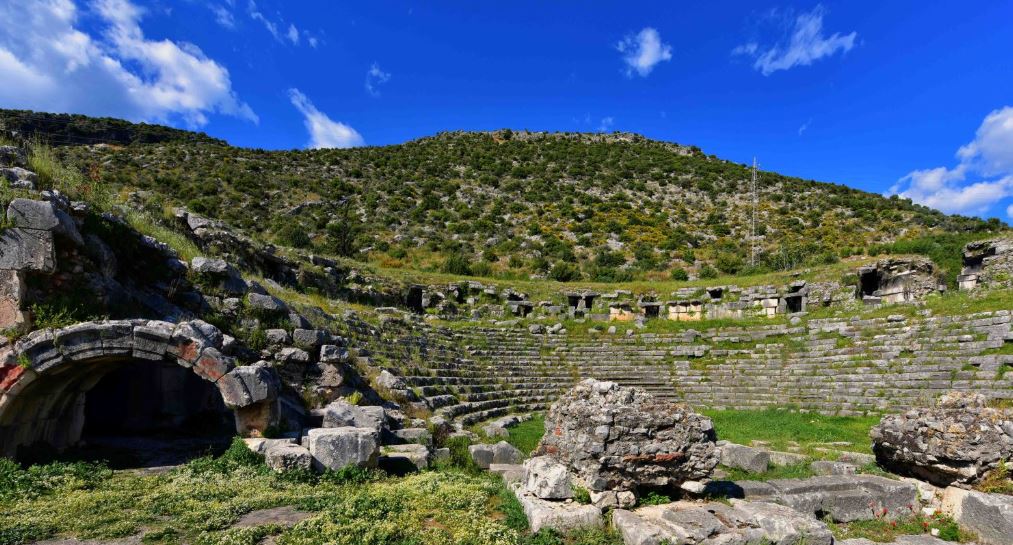
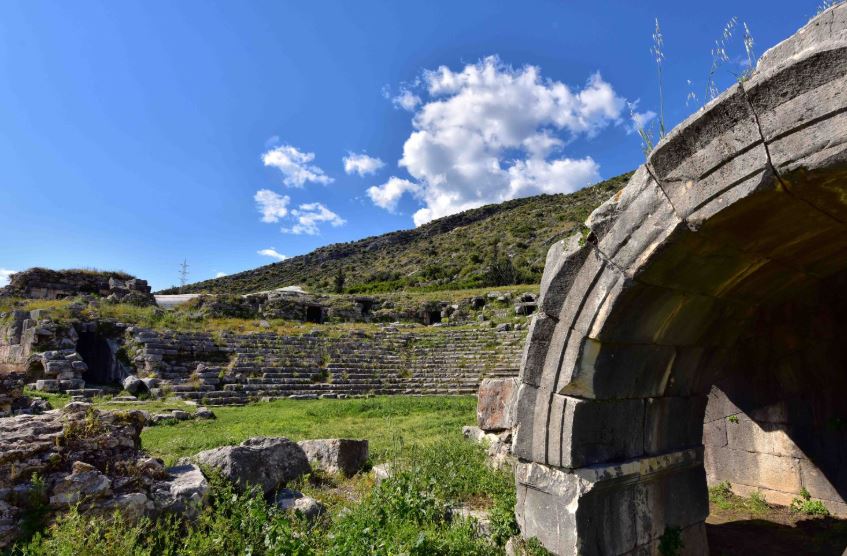
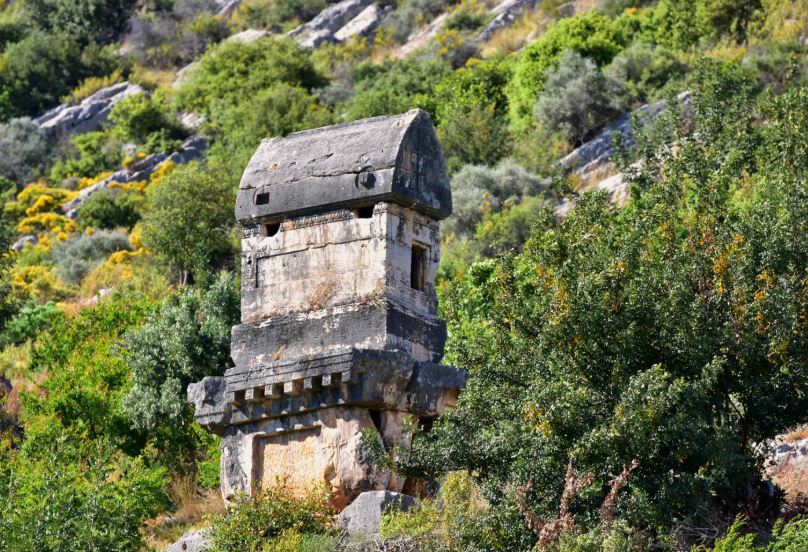
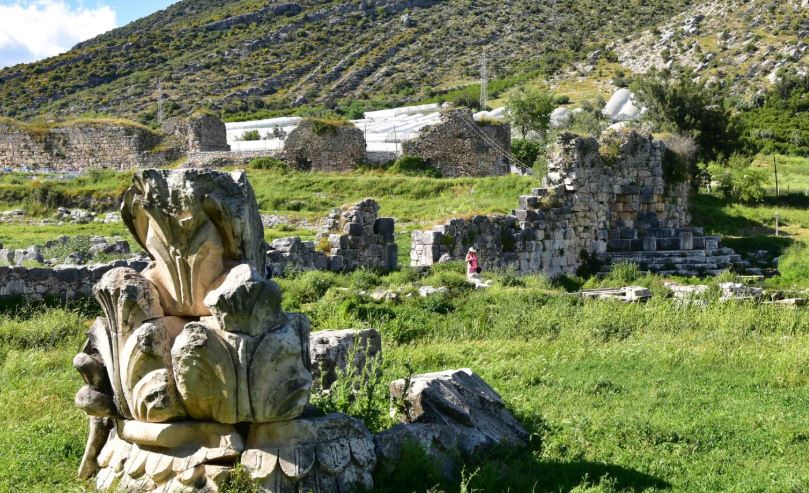
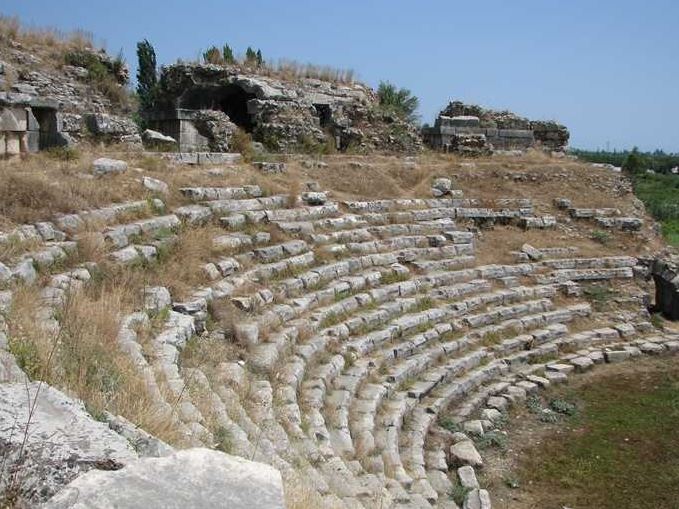
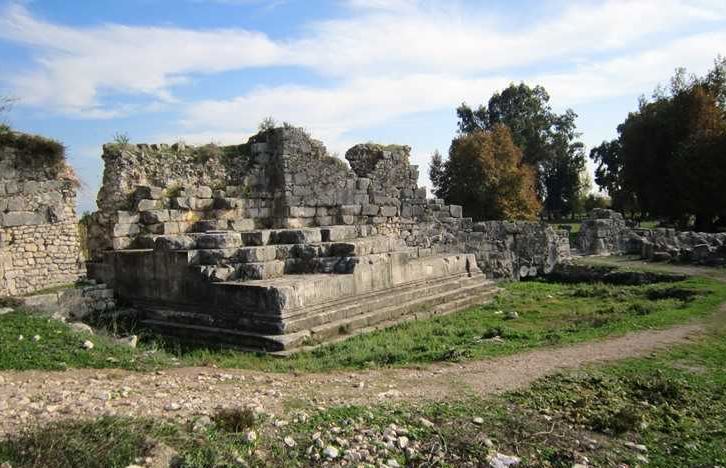
Limyra stands out not only for its historical ruins but also for its natural beauties. It offers its visitors both the opportunity to make a historical discovery and promises an experience full of magnificent views. In this article, we will examine in detail the history, architectural features, interesting facts and other aspects of the ancient city of Limyra that attract visitors.
Where is Limyra Ancient City / How to get there
Limyra Ancient City is located in Finike district of Antalya province, between Kaş and Finike. Located about 100 kilometers from Antalya city center, this ancient city attracts visitors with its magnificent nature and historical ruins.
Transportation Methods
- Private Vehicle: It is very easy to reach Limyra Ancient City from Antalya city center by private car. After following the D400 highway to Finike direction, you can reach the ancient city by following the Limyra signs. This journey takes approximately 1.5 hours.
- Public Transportation: There are bus services from Antalya to Finike. After reaching Finike, you can reach the ancient city by local minibuses to Limyra. This method is both an economical and practical transportation option.
- On foot: If you are staying in Finike, you can reach the ancient city of Limyra on foot. This is both a healthy activity and an opportunity to explore the natural beauties of the region.
Why Worth Visiting Limyra Ancient City
- Historical Value: Limyra has been home to many civilizations throughout history. Ancient ruins bear the traces of these civilizations.
- Archaeological Findings: Excavations in the ancient city reveal the history and cultural heritage of the region. Thanks to these excavations, visitors can see important remains of the ancient period.
- Natural Beauty: Limyra combines with the surrounding nature and offers a peaceful atmosphere to visitors. It is an area full of olive trees and magnificent views.
- Mythological Legends: Limyra is also associated with mythological stories. Limyra, an important settlement in ancient times, is included in the works of Homer. These mythological connections offer visitors the opportunity to make a historical journey.
- Peaceful Atmosphere: Limyra is located in a tranquil setting, away from the crowded tourist areas. This is the perfect destination for nature lovers and history buffs.
History of the Ancient City of Limyra
The history of the ancient city of Limyra dates back to the 3rd millennium BC. The origins of the ancient city are based on the settlement history of the Lycian region. Limyra became an important settlement by the Lycians, especially in the 6th century BC.
- Ancient Period: Limyra was known as an important trade center in ancient times. The city was famous for its olive and olive oil production. In addition, thanks to the strategic location of the region, it prospered economically by being located on trade routes.
- Hellenistic Period: In the 4th century BC, Limyra came under the influence of the Macedonian Empire. During this period, new buildings were built in the city. Limyra continued to grow by maintaining its importance in the Hellenistic period.
- Roman Period: Limyra was also an important settlement during the Roman Empire. During this period, many buildings were built in the ancient city. Remains of the Roman period can still be seen today.
- Byzantine Period: Limyra continued its existence during the Byzantine period. During this period, the social and religious structure of the city changed. Limyra became an important center during the Christian era.
- Abandonment: Limyra was abandoned in the 14th century. During this period, political turmoil and wars in the region caused the city to lose its importance. Over time, the ruins of the ancient city were swallowed by nature.
- Today: Excavations in the 20th century led to the rediscovery of Limyra. Today, the ancient city is preserved as an archaeological site and is open to visitors.
Architectural and Structural Characteristics of Limyra Ancient City
The ancient city of Limyra has a very rich architectural structure. In this section, we will examine the architectural details and structural features of the city in more detail.
City Structure
Limyra was built on a natural hill and is located in a strategic position. The ancient city was built with a planned structure.
- Walls: The walls around Limyra were built to protect the city against attacks from outside. These walls are made of stones and have a very thick structure. The remains of the city walls show how strong the city’s defense system was.
- Gates: The main entrance gates of Limyra are located at certain points of the city walls. These gates were used for both trade and military passage. The architecture of the gates reflects the construction techniques of the period.
Important Structures
There are many important buildings in the ancient city of Limyra. These structures reveal the historical and cultural richness of the city.
- Theater: The theater in Limyra is an important building reflecting the cultural life of the ancient period. It is thought to have been built in the 2nd century BC. The theater has a capacity of approximately 1,500 people and attracts attention with its stage structure and seating areas.
- Temples: There are many temple ruins in the city. These temples reflect the belief system and religious life of the ancient period. The ruins of the temples reveal the architectural understanding of the period.
- Agora: The agora, the central area of Limyra, is a place where trade and social interactions take place. The agora, together with the buildings around it, forms the heart of the ancient city.
- Bath: The ruins of the baths in Limyra bear the effects of Roman period architecture. The bath had an important role in both social and cultural life. In the remains of the baths, the areas of warmth and coldness attract attention.
Architectural Details
Limyra Ancient City stands out as an eye-catching structure with its architectural details. These details emphasize both the aesthetic and functional features of the city.
- Stone Workmanship: The stones used in the buildings of the city consist of large blocks cut smoothly. The stone workmanship shows the level of mastery of the period. Most of the stones at Limyra were obtained from local sources.
- Windows and Doors: The windows and doors in the buildings of the ancient city are architecturally remarkable. The window edges are decorated with arches. These arches add an elegant air to the buildings.
- Ornamental Elements: Limyra is equipped with various ornamental elements. In particular, the stone carvings and frescoes in the interiors of the buildings reflect the artistic understanding of the ancient period.
Environment of Limyra Ancient City
Limyra Ancient City is surrounded by natural beauties. The area where the ancient city is located is covered with olive trees and green nature.
- Olive Trees Limyra is famous for its olive production. Olive trees are widespread around the ancient city. These trees symbolize the historical richness of the city.
- Nature Walks: Limyra offers the opportunity to walk along with its natural beauties. Visitors can enjoy nature by walking around the ancient city.
Interesting Facts About Limyra Ancient City
- Ancient Settlement: Limyra is one of the oldest settlements of the Lycian region. Ancient ruins reveal the history and cultural heritage of the region.
- Centuries of History: Limyra has been home to many civilizations throughout history. This situation increases the rich history and cultural diversity of the city.
- Cultural Heritage: Limyra is located on the Lycian Way, which is a UNESCO World Heritage Site. This shows that the city is of international importance.
- Archaeological Excavations: Limyra has been unearthed by excavations since the mid-20th century. These excavations revealed the historical and cultural richness of the city.
- Mythological Connections: Limyra is also associated with mythological stories. Limyra, an important settlement in ancient times, is included in the works of Homer.
- Ancient Theater: The theater in Limyra is an important structure reflecting the cultural life of the ancient period. The activities held in the theater formed an indispensable part of social life.
- Local Handicrafts: Limyra has also been a center where local handicrafts developed. Ceramics and other handmade products produced in the ancient period reflect the cultural richness of the city.
- A Small City: Limyra is a smaller settlement compared to other ancient cities. However, this does not diminish the historical importance of the city.
- Hiking Trails: There are various trails for hiking around Limyra. These trails offer a great opportunity for nature lovers.
- Local Traditions: Limyra hosts events that reflect the traditional culture of the region. Visitors can have the opportunity to experience the local culture.
Nearby Attractions
- Finike: Located near Limyra, Finike is famous for its historical beaches and natural beauties. Visitors can enjoy the sea in Finike.
- Olympos: The ancient city of Olympos is located very close to Limyra. This ancient city attracts attention with its historical ruins and natural beauties.
- Cirali Cirali is a holiday resort located right next to Olympos. It is famous for its beach, natural beauties and hidden bays.
- Köşekbeli Canyon: This canyon is an ideal place for nature walks and adventure seekers. Visitors can explore the natural beauties of the canyon.
- Kemer Kemer is one of the popular holiday resorts in Antalya. It is a great destination for those looking for sea, sun and entertainment.
Best Time to Visit Limyra Ancient City
The best time to visit the ancient city of Limyra is spring and fall. From March to May, the weather is mild and nature comes alive. September and October are the months when the warm weather continues and the crowds diminish. Temperatures can be high during the summer months, especially in July and August, so those wishing to visit in summer should be prepared.
Dress Code
When visiting the ancient city of Limyra, it is important to choose comfortable and seasonally appropriate clothes. Since you will be hiking, wearing comfortable shoes will make the visiting experience more enjoyable. It is also recommended to wear outerwear according to the weather conditions. Light clothes suitable for the hot climate of Adana can be preferred.
Limyra Ancient City Opening and Closing Hours
Limyra Ancient City is open to visitors at all times of the year. In general, the ancient city opens at 09:00 in the morning and welcomes visitors until 19:00 in the evening. However, it is useful to check the current hours, because there may be changes in the hours according to seasonal changes and special days.
Limyra Ancient City Entrance Fees
The entrance fee to the ancient city of Limyra is around 5 USD.
Museum Pass
Limyra is not valid with the Museum Pass.
Limyra Ancient City is a settlement full of historical and cultural richness. It offers visitors an unforgettable experience with both its architectural structures and the natural beauties around it. By visiting Limyra, you can discover the traces of the past, witness history by wandering among the ancient ruins and enjoy nature.



